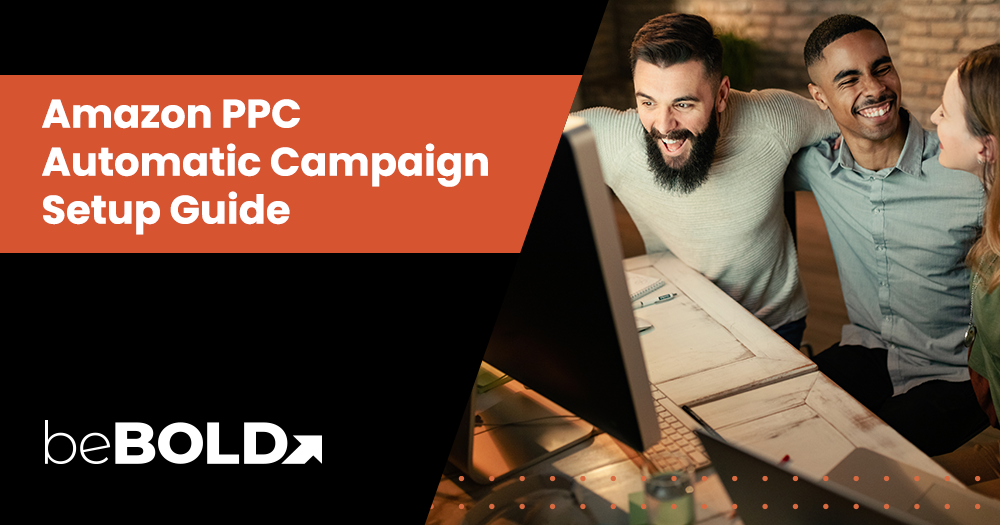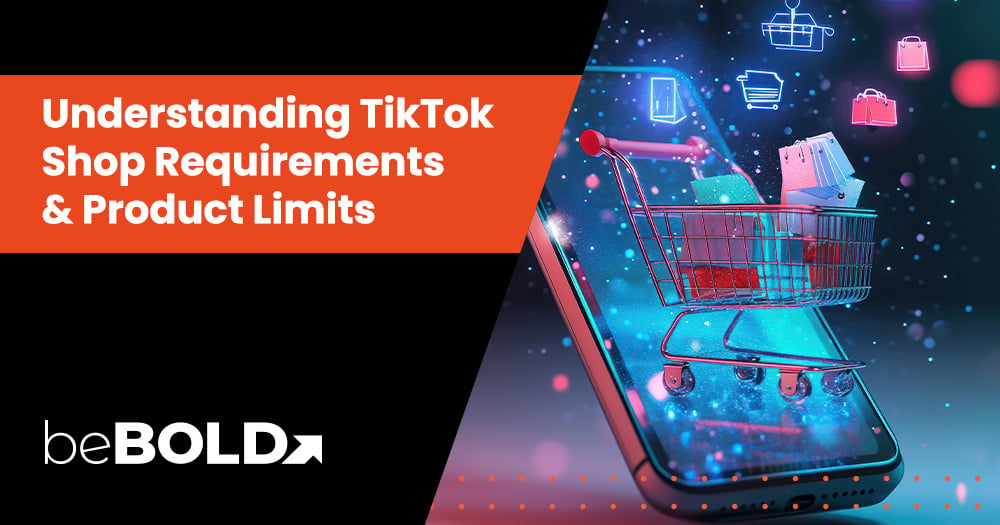Navigating Amazon PPC advertising can feel overwhelming, especially if you're new to the platform. With so many terms, strategies, and campaign types, knowing where to start can be a challenge. One essential yet often misunderstood tool is Amazon PPC Automatic Campaigns. When used effectively, these campaigns can significantly boost your product visibility, helping you drive more sales with minimal effort and maximise your advertising efforts.
In this blog, we break down Amazon PPC automatic campaigns in a simple, actionable way. You'll learn what they are, how they differ from manual campaigns, key features to leverage, the best times to use them, and crucial dos and don'ts. Let's dive in!
Summary
- Amazon selects relevant keywords and placements, making automatic campaigns ideal for beginners and keyword discovery.
- Manual targeting offers full control, while automatic campaigns rely on Amazon’s algorithm.
- Key features include automated targeting, match type segmentation, dynamic bidding, and broad reach.
- Best suited for new advertisers, keyword discovery, and broad product exposure.
- Setting up involves choosing Sponsored Products, setting budgets, selecting automatic targeting, and defining bidding strategies.
- Optimization requires monitoring performance, analyzing search terms, adjusting bids, and using negative keywords.
- Common mistakes include over-reliance, ignoring reports, unrealistic budgets, and missing negative keywords.
- Combining automatic and manual campaigns improves targeting and ROI.
What are Amazon PPC Automatic Campaigns?
Amazon PPC Automatic Campaigns are a type of advertising campaign in which Amazon's algorithm selects keywords and product placements for ads based on product listing. Automatic campaigns rely on Amazon's vast data to match ads with relevant customer searches.
This makes them an excellent option for beginners or those looking to discover high-performing keywords without extensive research. It can also help gather valuable insights that can later be used to refine manual targeting strategies.
A case study by Amazon showed how AJ Dezines, a children’s apparel brand on Amazon.in, used Sponsored Products with automatic targeting to boost visibility in a competitive market. By letting Amazon’s algorithm handle keyword selection, they doubled their sales and achieved a 19x ROI—all with a setup that took under two minutes.
Manual Targeting vs Automatic Targeting: How are they Different?
Both Manual and Automatic targeting have their own advantages. Here’s a table comparing the two:
|
Feature |
Manual Targeting |
Automatic Targeting |
|
Control Over Keywords |
Complete control |
Determined by Amazon's algorithm |
|
Ideal For |
Well-researched keyword lists |
Sellers lacking keyword insights |
|
Targeting Precision |
High |
Adaptive and data-driven |
|
Optimization Effort |
Requires ongoing optimization |
Adjusts dynamically over time |
|
Keyword Discovery |
Limited to chosen keywords |
Helps discover high-performing keywords |
|
Example |
Bidding on specific terms like "running shoes" |
Amazon may place ads on various fashion-related searches initially |
When to Use Which?
Use Automatic Targeting When:
- You're new to Amazon PPC and need to discover high-performing keywords.
- You want to maximize exposure and test market demand.
- You’re launching a new product and need broad visibility.
- You prefer a low-maintenance campaign with minimal manual adjustments.
Use Manual Targeting When:
- You have strong keyword data and want precise control over ad placements.
- You're optimizing for high conversion rates with proven search terms.
- You’re running a retargeting campaign or focusing on competitor ASINs.
- You want to refine bidding strategies based on past performance insights.
How to Set Up Amazon PPC Automatic Campaigns?
Follow the steps below to set up your Amazon PPC Automatic Campaigns:
1. Navigating to the Campaign Manager

Log in to your Amazon Seller Central and navigate to the Campaign Manager. This is where you can create, manage, and track the performance of your PPC campaigns. Click on "Create Campaign" to begin.

2. Selecting Campaign Type: Sponsored Products

Select "Sponsored Products" for automatic campaigns—this ensures your ads appear in relevant search results and product pages. Sponsored Products campaigns promote individual product listings and are the most commonly used ad type.
3. Defining Campaign Settings

Next, enter key details such as:
- Campaign Name – Choose a descriptive name to identify the campaign easily.
- Start and End Date – Set a duration or let the campaign run indefinitely.
- Daily Budget – Define how much you're willing to spend per day; a higher budget increases visibility.
Choosing the right campaign settings aligns your ads with your goals, whether you're aiming for brand awareness or maximizing sales.
Recommended Settings for Different Goals
Brand Awareness
- Use automatic targeting for broad reach.
- Set a higher daily budget to increase visibility.
- Choose dynamic bids – up and down to stay competitive.
- Focus on impressions and CTR as key metrics.
Sales & Conversions
- Use manual targeting with exact and phrase match.
- Set competitive but controlled bids to maximize ROI.
- Add negative keywords to eliminate irrelevant clicks.
- Track ACoS and conversion rate for performance.
Product Launches
- Run automatic campaigns for keyword discovery.
- Increase bid amounts to gain initial traction.
- Optimize based on search term reports and transition strong keywords to manual.
4. Selecting Targeting Type

In the next step, you'll have the option to choose between Automatic Targeting and Manual Targeting. Select Automatic Targeting.
Choosing between Automatic and Manual Targeting is key to campaign success. Use both strategically for optimal results.
Automatic Targeting Best Practices
- Ideal for keyword discovery and broad reach.
- Separate targeting types (close match, loose match, etc.).
- Regularly review search term reports and add negatives.
- Adjust bids based on relevance and performance.
- Transition high-performing keywords to manual campaigns.
Manual Targeting Best Practices
- Control bids for better efficiency.
- Use exact, phrase, and broad match types strategically.
- Add negative keywords to reduce wasted spend.
- Prioritize high-converting keywords.
- Continuously refine bids and targeting.
For best results, start with automatic targeting, then shift strong keywords to manual campaigns for greater control.
5. Setting Bidding Strategies

Choosing the right bidding strategy impacts ad performance, cost efficiency, and overall campaign success. Amazon offers two main bidding strategies- Fixed Bids and Dynamic Bidding.
|
Bidding Strategy |
How It Works |
Pros |
Cons |
Best For |
|
Fixed Bids |
Amazon does not adjust bids—your set bid is always used. |
Full control over ad spend, stable bidding. |
Can lead to overpaying for low-value clicks. |
Advertisers who want consistent bidding without automation. |
|
Dynamic Bidding - Down Only |
Amazon lowers bids when a click is less likely to convert. |
Reduces wasted spend, improves efficiency. |
May limit ad impressions and sales potential. |
Cost-conscious advertisers aiming to minimize ACoS. |
|
Dynamic Bidding - Up & Down |
Amazon increases bids for high-conversion opportunities and lowers them when conversions are less likely. |
Maximizes visibility, adapts to demand. |
Can increase ACoS, requires close monitoring. |
Competitive markets where flexibility is needed. |
To optimize your bidding, start with Dynamic Bidding - Down Only for cost control. As you gather data, test Up & Down to capture more conversions or switch to Fixed Bids for stable performance.
6. Creating Ad Groups

Ad groups help structure your campaign by grouping similar products under a shared bid strategy. Name your ad group and select the products you want to advertise.
Understanding Amazon Match Types

Amazon automatically categorizes automatic campaign targeting into four match types: Close Match – Ads appear when shoppers use search terms closely related to your product and target keywords.
- Close Match – Ads appear when shoppers use search terms closely related to your product.
- Loose Match – Ads appear for broader, less precise search queries.
- Substitutes – Ads show on product detail pages of similar competitor products.
- Complements – Ads display on product pages of related or complementary products.
Amazon’s match types determine how closely a customer’s search term must relate to your targeted keywords. Choosing the right match type helps balance reach and precision. Here's a table comparing the different match types:
|
Match Type |
How It Works |
Pros |
Cons |
Example |
|
Broad Match |
Ads show for searches containing variations, synonyms, and related terms. |
Maximizes reach helps discover new keywords. |
Can lead to irrelevant clicks and higher ACoS. |
Target: running shoes- Ad shows for best jogging sneakers. |
|
Phrase Match |
Ads appear when the search contains the exact keyword phrase, with words before or after. |
More control than broad match, better relevance. |
Less reach than broad may still include unwanted variations. |
Target: running shoes- Ad shows for buy running shoes online. |
|
Exact Match |
Ads trigger only for the exact keyword or close variants. |
Highest precision, lower wasted spend. |
Limited reach, may miss new keyword opportunities. |
Target: running shoes- Ad shows only for runn |
7. Review and Launch

Before launching, double-check your campaign settings, budget, and product selection. Once everything looks good, click "Launch Campaign" to go live.
Best Practices for Optimizing Automatic Campaign Performance

Optimizing your Amazon PPC automatic campaign requires ongoing monitoring and strategic adjustments. Here are some key best practices to follow:
1. Monitor Performance Metrics Regularly
Amazon provides valuable insights through performance metrics that help you assess and refine your campaign. Key metrics to track include:
- CTR: Measures engagement; low CTR may mean poor relevance.
- ACoS: High ACoS signals inefficient spending.
- Conversion Rate: Low rate may indicate unoptimized listings.
- CPC: High CPC may require bid or keyword adjustments.
- Impressions: Low impressions suggest low bids or weak targeting.
2. Analyzing Search Term Reports
Analyzing search term reports helps identify top-performing keywords to add to manual campaigns while filtering out irrelevant ones through negative keywords. This process improves targeting, reduces wasted ad spend, and enhances overall campaign performance.
3. Implementing Negative Keywords
Negative keywords prevent ads from appearing in irrelevant searches. Continuously update your list to filter out low-converting terms. For example, if "men's shoes" gets clicks but no sales for your "women's shoes" ad, add it as a negative keyword to improve targeting and reduce wasted spend.
Negative Keyword Strategy
- Analyze Search Term Reports: Regularly review reports to find irrelevant or underperforming keywords.
- Add Negative Keywords in Phases: Start with broad terms and refine based on data.
- Use Exact and Phrase Match Types: Block specific searches without eliminating valuable variations.
- Segment Negative Keywords by Campaigns: Apply different negatives for automatic and manual campaigns.
- Monitor Performance Continuously: Update your list as new trends emerge.
Common Irrelevant Terms to Exclude
- Unrelated Audience Keywords: "free," "cheap," "used," "wholesale".
- Mismatched Product Terms: If selling premium shoes, exclude "budget shoes" or "kids' shoes".
- Competitor-Specific Searches: If branding is a key factor, exclude direct competitor names
- Non-Buyer Intent Phrases: "reviews," "DIY," "how to make" (if selling a finished product).
4. Adjusting Bids
Bid adjustments optimize campaign performance. Start with Amazon’s recommendations, then refine bids based on performance data. Lower bids for high ACoS keywords and increase for profitable ones. Regular adjustments ensure better ad spend allocation and ROI.
Also Read: TACoS vs ACoS: Which Metric is Best for Your Business?
Common Pitfalls and How to Avoid Them

While Amazon PPC Automatic Campaigns can be powerful tools for increasing visibility and driving sales, there are several common pitfalls to watch out for. Avoiding these mistakes will help you achieve better results and maintain cost-effective advertising. Let's discuss these in detail below.
1. Over-Reliance on Automatic Campaigns
Automatic campaigns expand reach and uncover keywords, but relying solely on them limits control. Use them for discovery, then shift top keywords to manual campaigns for better bidding and ROI.
Use automatic campaigns to find top keywords, then shift them to manual campaigns for better control. This fine-tunes bids, improves targeting, and cuts wasted spend. Blending both strategies ensures broad reach and higher profitability.
2. Neglecting to Monitor Performance
Failing to monitor your campaigns can lead to wasted ad spend on underperforming keywords, impacting your overall ad budget. Regularly assess your metrics, such as ACoS and conversion rates, to identify any issues. This allows for timely adjustments to bids, placements, and keywords, ensuring your budget is spent efficiently.
3. Overlooking Search Term Reports
Regularly reviewing search term reports helps identify high-performing keywords for manual campaigns and filter out ineffective ones as negatives. Ignoring them means missed opportunities and wasted ad spend.
4. Setting Unrealistic Budgets or Bids
A high budget without careful monitoring could waste money on ineffective keywords. Instead, start with a moderate budget and gradually increase bids based on performance data to ensure you're optimizing spend effectively.
5. Forgetting to Add Negative Keywords
Without a well-curated negative keyword list, you risk wasting your budget on irrelevant search queries. After reviewing search term reports, identify and add poor-performing or unrelated keywords as negatives to ensure your ads are shown to the right audience.
6. Running Campaigns Without Clear Goals
Launching a campaign without clear objectives is a common error. Whether you want to increase sales, boost visibility, or discover new keywords, defining specific goals will guide your strategy and help you track success. Setting clear goals ensures that you can make data-driven decisions and allocate your budget effectively.
7. Troubleshooting Common Amazon PPC Errors
- High Ad Spend, Low Sales – Add negative keywords, adjust bids, and refine targeting.
- Low CTR – Improve product titles, images, and descriptions for better ad relevance.
- High ACoS – Lower bids on underperforming keywords and shift top performers to manual campaigns.
- No Impressions – Increase bids, optimize listings, and check budget limits.
- Irrelevant Clicks – Update negative keywords, refine match types, and monitor search terms.
Also Read: Are Amazon Ads Worth it in 2025?
What are the Key Features of Amazon PPC Automatic Campaigns?
Amazon PPC Automatic Campaigns offer several key features that make them a powerful tool for advertisers. These include:
- Automated Keyword Targeting – Amazon selects keywords and placements based on your listing.
- Match Type Segmentation – Targets shoppers using Close Match, Loose Match, Substitutes, and Complements.
- Dynamic Bidding – Adjusts bids automatically to optimize conversions.
- Broad Reach – Ads appear in search results, product pages, and other placements.
- Keyword & ASIN Discovery – Identifies high-performing keywords and competitor ASINs.
- Easy Setup – No manual keyword selection, minimal management required.
- Budget Flexibility – Set daily budgets while Amazon optimizes placements.
How Amazon’s Algorithm Optimizes Ad Placements
Amazon’s machine-learning algorithm continuously analyzes search trends, shopper behavior, and conversion data to place your ads where they’re most likely to drive ad dollars and sales. It factors in:
- Relevance – Matches your product to shopper queries based on listing details.
- Performance History – Prioritizes placements with higher conversion potential.
- Competitive Bidding – Adjusts bids in real-time to compete effectively while optimizing costs.
When to Use Automatic Campaigns?
Automatic campaigns are ideal for sellers who want to quickly launch ads without extensive keyword research. They leverage Amazon's algorithms to match ads with relevant searches, making them useful for discovering new keywords and expanding product visibility.
Common Use Cases for Automatic Campaigns
- New Product Launches – Helps gain initial visibility and collect keyword data.
- Keyword Discovery – Identifies high-performing keywords for future manual campaigns.
- Broad Audience Reach – Targets a wider range of shoppers across different search queries.
- Competitor & Category Targeting – Places ads on competitor product pages and related categories.
- Time-Saving Advertising – Requires minimal setup and adjustments, making it beginner-friendly.
Pros & Cons of Automatic Campaigns
|
Pros |
Cons |
|
Easy to set up and manage |
Less control over keyword targeting |
|
Helps discover new, high-performing keywords |
Can lead to wasted ad spend on irrelevant searches |
|
Broad reach across Amazon search and product pages |
Less control over bid adjustments |
|
Uses Amazon’s data to optimize placements |
Requires ongoing monitoring to filter ineffective keywords |
|
Great for beginners and testing new products |
May have higher ACoS if not optimized |
How to Transition from Automatic to Manual Campaigns?
Moving from automatic to manual campaigns helps you refine targeting, optimize bids, and improve ad performance. Let's discuss the steps involved in transitioning from automatic to manual campaigns:
Steps to Transition Effectively
- Analyze Search Terms – Identify keywords with high impressions, clicks, and conversions.
- Select High-Performers – Focus on keywords with strong CTR and low ACoS.
- Create a Manual Campaign – Organize keywords into relevant ad groups.
- Choose Match Types – Use Exact for precision, Phrase for control, and Broad for reach.
- Adjust Bids – Start moderately and increase for top performers.
- Add Negative Keywords – Exclude irrelevant or low-performing terms.
- Monitor & Optimize – Continuously refine bids and keywords for better results.
How to transfer high-performing keywords to manual campaigns?
- Download Search Term Reports – Access your report in Amazon Seller Central under the advertising dashboard.
- Identify Top Keywords – Sort keywords by CTR, conversion rate, and ACoS to determine the best-performing ones.
- Segment Keywords into Ad Groups – Group keywords by product type, search intent, or performance level for better organization.
- Set Competitive Bids – Start with Amazon’s suggested bid and adjust based on performance.
- Run A/B Testing – Test different match types and ad creatives to refine targeting.
- Optimize Based on Data – Regularly update keyword lists, bid strategies, and negative keywords for maximum efficiency.
Conclusion
Amazon PPC Automatic Campaigns can effectively boost visibility and sales. While they lack manual control, they help reach a broad audience and uncover valuable keywords. Success depends on proper setup, tracking, bid management, and negative keywords. Avoid over-reliance, neglecting performance, or unrealistic budgets. With clear goals and regular optimization, they can drive brand growth on Amazon.
Need help optimizing your PPC strategy? beBOLD Digital specializes in maximizing ROI and driving measurable growth. Contact us today and take your Amazon advertising to the next level!
Frequently Asked Questions
1. How often should I make adjustments to my Amazon Automatic Campaigns?
Review performance metrics regularly and make necessary adjustments every one to two weeks. This ensures that your campaigns stay optimized and continue to yield beneficial results.
2. Can I run both automatic and manual campaigns simultaneously for my products?
Yes, running both automatic and manual campaigns at the same time can benefit your Amazon business. The automatic campaigns let you explore new keyword opportunities, while the manual campaigns allow targeted efforts towards known high-performance keywords.
3. How to maintain your Amazon automatic targeting campaigns?
Regular monitoring, bid adjustments based on performance, adding negative keywords, interpreting search term reports, and applying insights gained for optimization are some ways of maintaining your Amazon automatic targeting campaigns.
Ready to take control of your Amazon PPC campaigns and unlock true growth? Let beBold Digital handle the strategy while you focus on scaling your business. Reach out now to get started and watch your ROI soar!









Comments